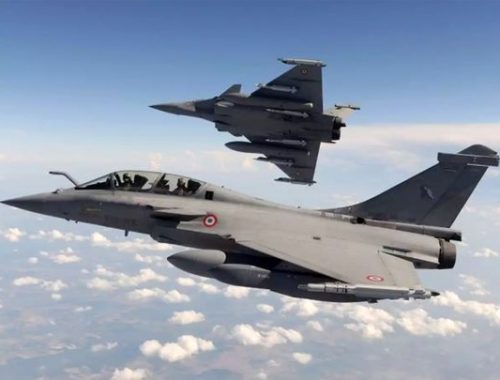The Indian Air Force has already moved its frontline Sukhoi 30-MKI, Jaguar, Mirage 2000 aircraft and Apache attack helicopters to key air bases. Additional Indian Army troops are also being moved to forward locations.
Indian armed forces have deployed air defence systems in the Ladakh area amid escalating border tension with China. According to reports, defence forces have deployed surface-to-air missile (SAM) systems in eastern Ladakh to counter a potential aerial threat from the Chinese Air Force and possible violation of Indian air space.
New Delhi is building up military strength in the area after the violent face-off between Indian and Chinese soldiers in the Galwan valley on the night of June 15-16. Twenty Indian soldiers, including an officer, were killed in the clash. While the Chinese side is also believed to have had casualties, the number remains unclear.
India has already mobilised fighter jets and sent thousands of additional Army troops to forward locations along the border with China.
The Indian Air Force (IAF) has reportedly moved a sizeable number of its frontline Sukhoi 30-MKI, Jaguar, Mirage 2000 aircraft and Apache attack helicopters to several key airbases including Leh and Srinagar in the last five days.
According to another report in The Economic Times, Defence Minister Rajnath Singh, who is currently visiting Russia, is likely to push for faster delivery of the S-400 Triumf anti-missile system.
Russia is believed to have delayed delivery of the $5.4-billion system to December 2021 amid the novel coronavirus pandemic, the report adds.
Air Chief Marshal Bhadauria on June 20 said the IAF is “well prepared” and “suitably deployed” to counter any security challenge along the border with China and even hinted that his force has flown combat air patrols in the Ladakh region as part of heightened preparedness.
India and China are holding another round of Lt. General-level talks on June 22 to discuss ways to de-escalate tension between the two sides. The talks were scheduled to happen at Moldo on the Chinese side of the Chushul sector.
The Indian delegation at the talks is being led by 14 Corps Commander Lt Gen. Harinder Singh.
The first round of Lt Gen-level talks was held on June 6 during which both sides decided to “disengage” in all the sensitive areas.
India has the upper hand in military deployments along its border with China, says a recent Harvard University assessment. If the Chinese attacked, co-author Frank O’Donnell of the US Naval War College told HT, “due to the larger permanent military presence of Indian forces vis-a-vis Chinese forces along the border areas, India would eventually be able to force China back across the LAC, although casualties would be extremely high on both sides.” One unknown in such a conflict would be China’s ability to use cyberattacks to disable Indian communications and logistics. (Moneycontrol News and PTI)




